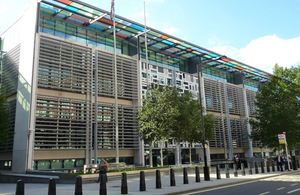Energy efficiency drive for historic homes
New wide-ranging review to tackle barriers to make historic homes more energy efficient, while protecting the beauty of these buildings.

New plans have been published today to remove barriers and drive energy efficiency in historic homes, cutting energy bills for households across the country, while also ensuring that the important historical and beautiful features of these homes are properly protected.
The Government wants to see the energy efficiency of historic homes improved but without the blight of ugly or inappropriate retrofit damaging these properties.
The Government has published its review into the challenges households face when retrofitting in conservation areas and listed buildings.¬Ý
Currently, owners of home built before 1919 face paying on average ¬£428 a year more on energy bills if their home is not energy efficient*, while the review found planning was a major issue faced by households, with frustration about the time it takes to get planning permission.‚Ä�
The review has set out a series of commitments to drive energy efficiency and low carbon heating improvements to listed buildings and buildings in conservation areas across England, as part of the Government‚Äôs commitment to reach Net Zero by 2050.‚Ä�
Minister for Housing and Communities Baroness Penn said:‚Ä�
¬Ý‚ÄúOur historic homes are the jewel in the crown of this country‚Äôs heritage and must be protected.‚Ä�
‚ÄúThis review will ensure they are preserved for future generations to enjoy, while also improve the lives of those who live in them by reducing their energy costs, supporting us in our shared goal to reach Net Zero by 2050.‚Äù‚Ä�
Minister for Arts & Heritage Lord Parkinson of Whitley Bay said:
“People who own and live in historic homes are their custodians, and want to take responsible action to protect them for the benefit of generations to come.
‚ÄúThat isn‚Äôt always as straightforward as it should be, so this review has looked at how we can make it easier, while continuing to protect our historic environment.‚Ä�
Minister for Energy Efficiency and Green Finance Lord Callanan said:
“We’ve already made huge progress in improving energy efficiency - with almost half of all homes in England at an EPC rating of C or above, up from 14% in 2010.
‚ÄúToday‚Äôs measures will now help to keep historic homes warm for less, while protecting our heritage as we progress towards our net zero goal.‚Ä�
Commitments set out in the review to drive energy efficiency‚ÄØinclude:‚Ä�
- A consultation on new national development management policy specially for historic buildings, ensuring greater certainty and consistency in decisions.‚Ä�
- Consulting on the greater use of Listed Building Consent Orders to support building improvements, removing the need to submit individual listed building consent applications.‚Ä�
- Developing clearer guidance for historic homeowners on improving energy efficiency and supporting the construction industry to better deliver retrofitting services.‚Ä�
- Consulting on reforms to Energy Performance Certificates to ensure they are¬Ý accurate, reliable and trustworthy.‚Ä�
Duncan Wilson, Chief Executive of Historic England, said:‚Ä�
¬Ý‚ÄúHistoric England welcomes this Energy Efficiency Review and the positive actions it highlights. Historic buildings can and must accommodate change if they are to play a crucial role in helping the UK to transition to Net Zero.‚ÄØ‚Ä�
‚ÄúThis review demonstrates that heritage needn‚Äôt be a barrier and identifies opportunities to unlock the potential of historic buildings in England to contribute to meeting our Net Zero target.‚Äù‚Ä�
The measures outlined in ‚ÄòAdapting Historic Homes for Energy Efficiency: A Review of the Barriers‚Ä�, will make life easier for those who own and live in historic homes, while ensuring the country‚Äôs heritage is protected.‚Ä�
‚ÄØThe review has been developed in partnership with the Department for Levelling Up, Housing and Communities, Department for Energy Security and Net Zero and the Department for Culture, Media and Sport, supported by Historic England.¬Ý
‚ÄØIn the British Energy Security Strategy, published April 2022, the Government committed to undertake a review of the practical planning barriers households can face when installing energy efficiency measures such as improved glazing in conservation areas and listed buildings.‚ÄØ‚ÄØ‚Ä�
‚ÄØEvidence collected during the review and feedback from stakeholders highlighted that barriers were wider than just the planning system. The scope of the review was therefore, broadened to examine a wider set of challenges to retrofitting historic homes, and to identify where further work is needed.
Further information:
- According to the English Housing Survey 2021, homes built before 1919 could save on average £428 per year on energy costs if they are improved to EPC C, through insulation or other energy saving measures.
- ‚ÄòAdapting Historic Homes for Energy Efficiency: A Review of the Barriers‚Ä� is available to view here.